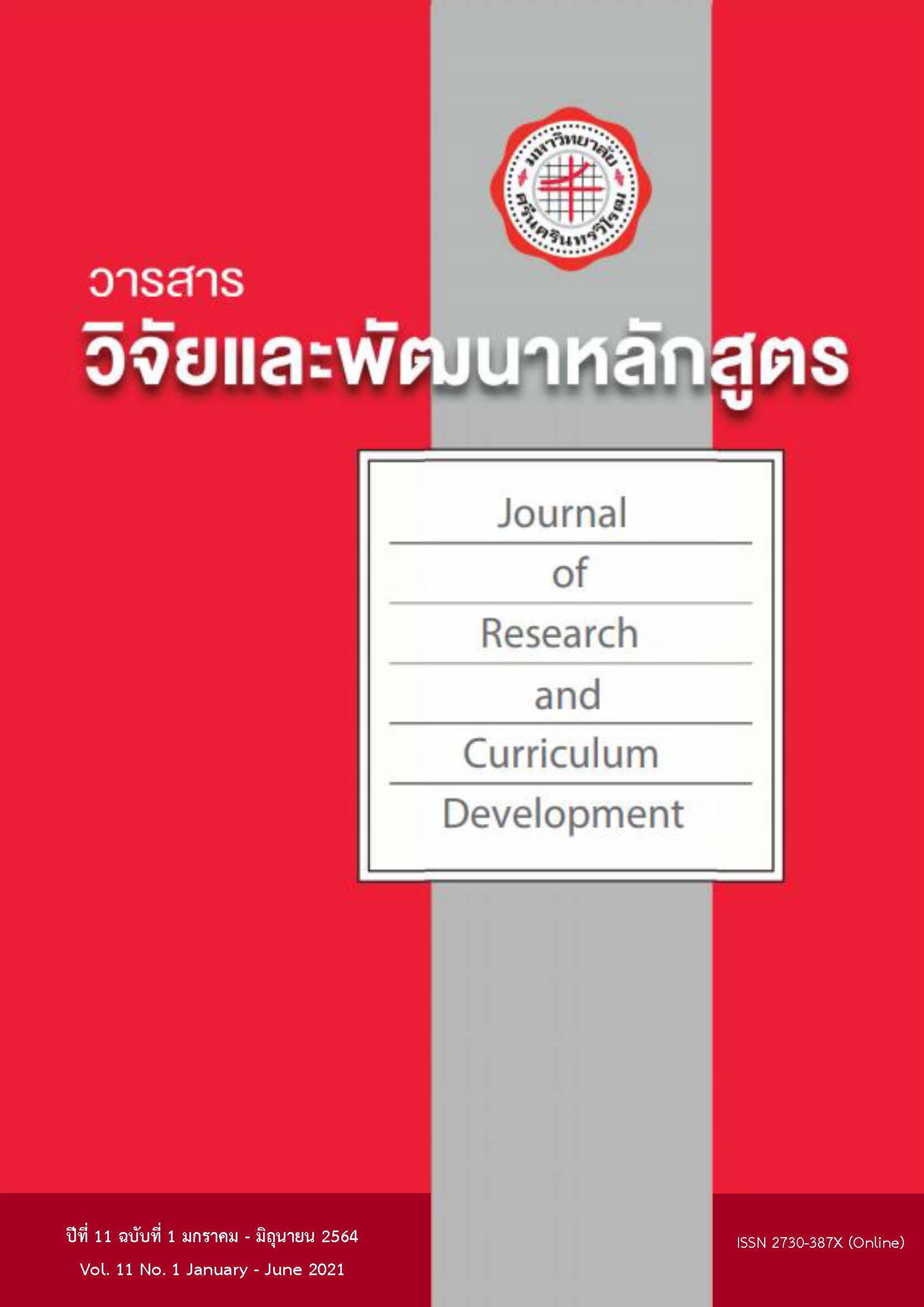รูปแบบการเรียนการสอนที่มุ่งเน้นการสร้างสัญญาการเรียนรู้ การสืบค้นความรู้และการใช้กิจกรรมเป็นฐาน (CIA)เพื่อส่งเสริมผลลัพธ์ทางการเรียนในวิชาโภชนศาสตร์และสุขภาพ
Keywords:
contract learning, inquiry based learning, activity based learningAbstract
Concept of teaching and learning in the 21st century should focus on the students to create new knowledge. Promote systematic thinking along the way in solving problems logically. And the body of knowledge from real experiences in daily life Therefore, in order to achieve the process of applying knowledge in the classroom to be practical and practical. Teachers therefore adopt a teaching model that focuses on building a learning contract between the learner and the teacher, Learning contract (C), Inquiry based learning (I), and Activity based learning ( A) When all 3 come together, a new study model called CIA Learning or Contract inquiry and activity based learning is used to model learning through nutrition education activities for the elderly in disease prevention according to Context of indigenous food culture in the course nutrition and health The objective is to provide learners with teamwork skills. Have responsibility and public mindset Can fix immediate problems Have relationship building skills with others Including being able to reflect on ideas to lead to continuous learning development and to promote more efficient learning outcomes.
References
/Portals/25/Documents/News/5 Essential features of inquiry_Kamonwan.pdf ?timestamp=1434440007462
เบญจวรรณ พิททาร์ด. (2553). รูปแบบการสอนโดยใช้Enquiry-Based Learning ในเรื่องกฎหมายที่เกี่ยวข้องกับการประกอบวิชาชีพการพยาบาล. วารสารพยาบาลกระทรวงสาธารณสุข, 25(2), 116-129.
ประสาท เนืองเฉลิม. (2558). การเรียนรู้โดยการบริการสังคม Service Learning. วารสารวิชาการแพรวากาฬสินธุ์ มหาวิทยาลัยราชภัฏกาฬสินธุ์, 2(1), 9-18.
วารุณี พลิกบัว. (2560). Clinical Teaching Reflection. สืบค้น 10 มิถุนายน 2562, จาก http://www.ns.mahidol.ac.th
ลัดดาวัลย์ ไวยสุระสิงห์ และ สุภาวดีนิภารัชจินดา. (2554). การพัฒนารูปแบบการเรียนรู้ การเรียนการสอนตามแนวคิดการเรียนรู้แบบมีเงื่อนไขจริงเพื่อเพิ่มผลสัมฤทธิ์ทางการเรียนและความสามารถในการคิดวิจารณญาณของนักศึกษาพยาบาลวิทยาลัยพยาบาลบรมราชชนนีสุพรรณบุรี. วารสารการพยาบาลและการศึกษา, 4(3), 63-77.
สถาบันพระบรมราชชนกกระทรวงสาธารณสุข. (2554). คู่มือการใช้หลักสูตรพยาบาลศาสตรบัณฑิตปี 2555. นนทบุรี: สถาบันพระบรมราชชนกสำนักปลัดกระทรวงสาธารณสุข.
สุดเฉลิม ศัสตราพฤกษ. (2560). การจัดการเรียนการสอนในศตวรรษที่ 21 แบบห้องเรียนกลับด้านเพื่อการพัฒนาทักษะการเรียนรู้และนวัตกรรม. วารสารวิทยบริการ มหาวิทยาลัย สงขลานครินทร์, 28(1), 100-108
Bone Z. (2014). Using a Learning Contract to Introduce Undergraduates to Research Projects. The Electronic Journal of Business Research Methods, 121-130.
Burgh, G., Nichols, K. (2012). The parallels between philosophical inquiry and scientific inquiry: Implications for science education. Educational Philosophy and Theory, 44(10), 1045–1059.
Knowles, M. S. et al. (1984). Andragogy in Action. Applying modern principles of adult education. San Francisco: Jossey Bass.
Maneewan, K., Thin-uan, P., Lorga, T., Intharacha, W. (2017). Contract Inquiry-And Activity-Based Learning (CIA Learning) In Activity-Based Learning Course. ANPOR Annual Conference, 127-136.
Pang, K. (2010). Creating Stimulating Learning And Thinking Using New Models Of Activity-Based Learning And Metacognitive-Based Activities. Journal of College Teaching & Learning, Volume 7 Number 4.





